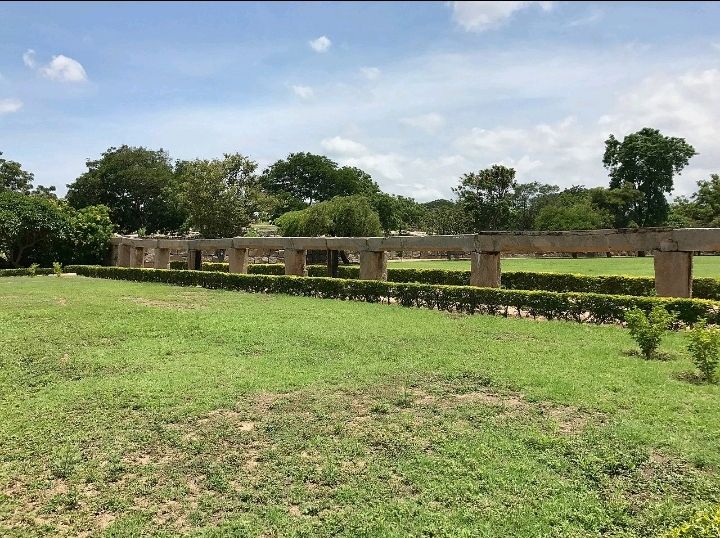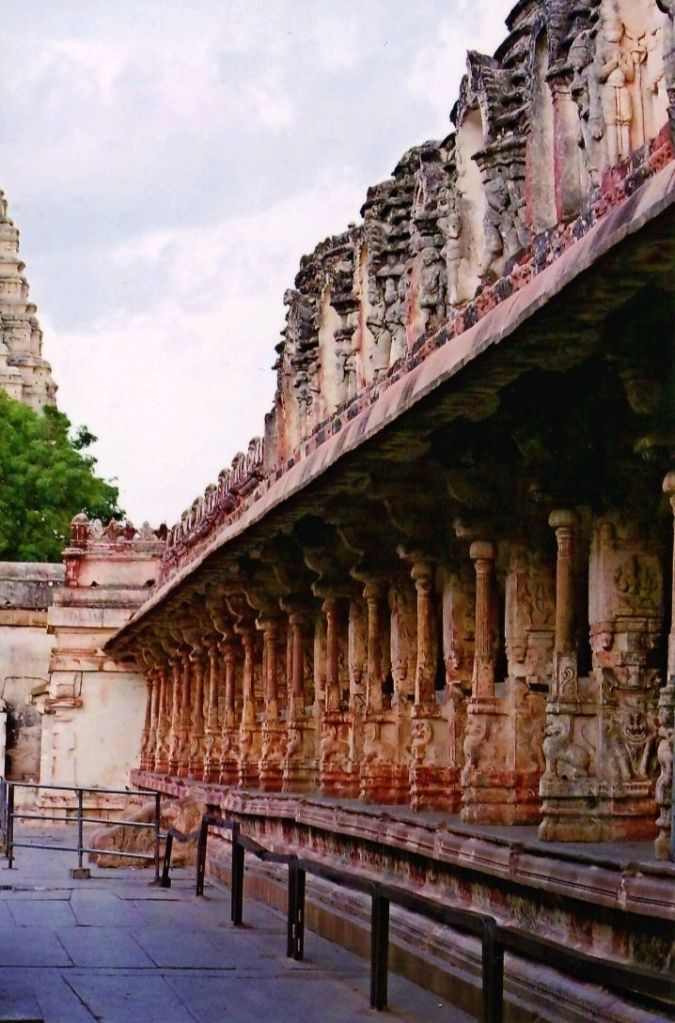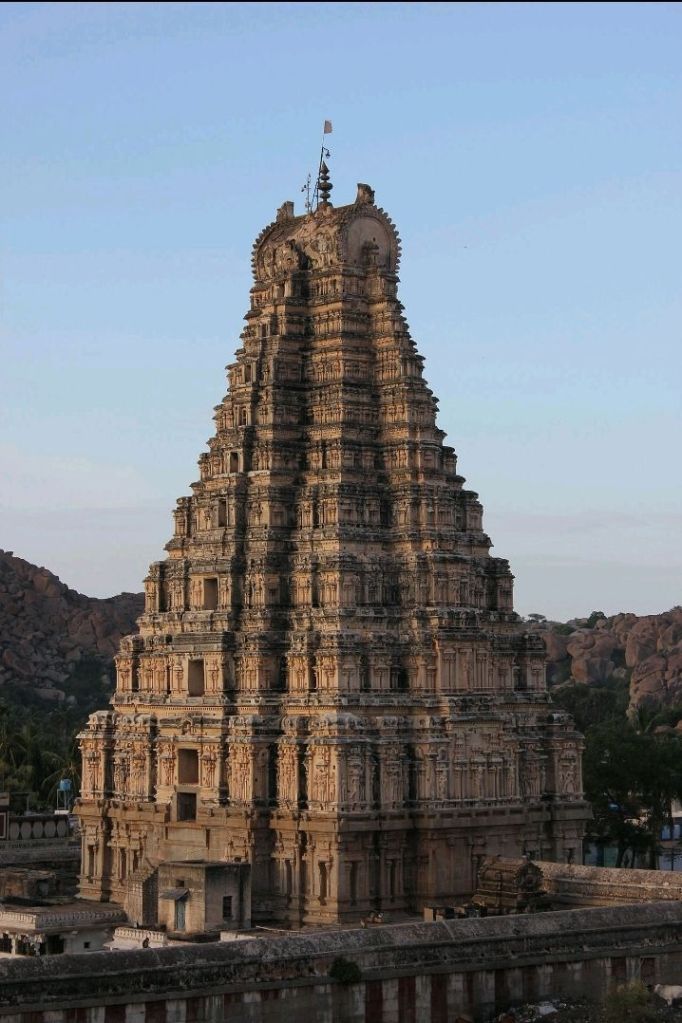
ECONOMY OF VIJAYANAGARA EMPIRE
The economy of the VIJAYANAGARA EMPIRE was largely depended on agriculture . Wheat , sorghum (jowar) , cotton and pulse legumes grew in the semi-arid regions , while sugarcane and rice thrived in the rainy areas . Betel leaves , areca and coconut were the principal cash crops , and large scale cotton production made the entire empire a hub of textile industry . Spices such as turmeric , pepper , cardamom , and ginger grew in the remote MALNAD hill region were brought for trade and export in the empire’s capital city , which had remained market place for jems and gold for long .Tenet farmers were given the right of part ownership of the land overtime .To maintain daily market availability , the cultivation of roses , the manufacture of salt pans and the making of ghee (clarified butter) received a lower tax assessment . Export to CHINA intensified and included cotton , spices , jewels , semi-precious stones , ivory , rhino horn , ebony , amber , coral and perfumes ; while CHINESE products like silk and others used to frequently visit at empire’s 300 large and small ports on the ARABIAN SEA and the BAY of BENGAL .The ports of MANGALORE, HANOVER , BHATKAL , BARKUR , COCHIN, CANNANORE , MACHILIPATNAM , and DHARMADAM were important not only as a secured harbors for traders from AFRICA , ARABIA , ADEN , CHINA , the RED SEA and BENGAL, but some of them served as a ship building centres . At these ports , when the merchant ships docked they were taken into official custody immediately and taxes were levied on all items sold and security were guaranteed to all such ships by the state administrative officials .This is all the story of the West Coast . Similarly , East Coast trade routes were busy with goods arriving from GOLCONDA where rice , millet , pulses and tobacco were grown on a large scale . GOLCONDA was also specialized in plain cotton and Pulicat in printed . The main imports on the East Coast were non-ferrous metals , camphor , porcelain , silk and luxury goods . MAHANAVAMI festival marked the beginning of a financial year from when the state treasury accounted for all outstanding dues of rents and taxes within nine days . Temples were taxed for land ownership to cover military expenses . In the TELUGU speaking region the temple tax was called SROTRIYAS and in the TAMIL speaking districts it was called JODI . JEEVADHANAM was collected for cattle-graze on non-private lands . Residential property taxes were called ILLARI .Thus, VIJAYANAGARA EMPIRE was economically quite prosperous .

SOCIETY & CULTURE DURING VIJAYANAGARA EMPIRE
The HINDU social order was prevalent in the daily life in the entire empire . Identification of caste and sub- caste was made based on temple affiliations , lineage , family units , royal retinue , warrior clans , occupational groups , agricultural and trade groups , devotional networks and even priestly cabals . Caste system was very rigid . Caste affiliation was also closely tied to craft production . And members of common craft formed collective membership . To TALBOT, SETTI was used to identify communities across merchant and artisan classes , while BOYA identified herders of all types .The TOTTIYANS were shepherds who later gained marginal ruling status called POLIGARS . SAURASHTRANS were traders coming from GUJARAT .The REDDYS were agriculturists and UPPILIA were salt farmers . SATI practice was evidenced from the ruins of VIJAYANAGARA EMPIRE . LINGAYATISM, a social religious movement, provided momentum for flexible social norms which helped women to enter into the fields like administration , business , trade and fine arts which were once dominated by males. DEVADASI system as well as legalized prostitution also existed . Rich people used to wear a tall turban made up of silk . It was called the PETHA or KULAVI . Jewelry was used by men and women both . During celebrations , they adorned themselves with flower garlands and used perfumes made up of rose water , musk and sandlewood . Physical exercises like wrestling and others were popular among men . Gymnasiums have been discovered inside royal quarters . Community based gaming like cock fight , ram fight and female wrestling were prevalent . Dowry was a well established practice in both HINDU and MUSLIM royal families . There is also mention of STREEDHANA (women’s wealth) in an inscription and that the villagers should not give away land as dowry .The VIJAYANAGARA’S kings were tolerant to all religions and sects . Poets , scholars and philosophers wrote primarily in KANNADA , TELUGU , TAMIL and SANSKRIT .

VIJAYANAGARA ARCHITECTURE
VIJAYANAGARA architecture can broadly be classified into : 1. Religious ; 2. Courtly ; and 3. Civic .The VIJAYANAGARA architectural style is a combination of CHALUKYA , HOYSALA , RASHTRAKUTA , PANDYA and CHOLA styles . Large multipurpose halls (mandapas) and the tall entrance towers (gopurams) were two VIJAYANAGARA additions to South INDIAN temple architectural tradition .The most popular material for temple construction during the WESTERN CHALUKYA and HOYSALA EMPIRE was chloritic schist or soapstone . Since soapstone is soft and easily carved , it was used for structural construction . But during VIJAYANAGARA period , the local hard granite was preferred in the BADAMI CHALUKYA style as the use of granite reduced the density of sculptured works and it was more durable material for temple structure . Moreover , to cover unevenness of the stone used in structures , artists employed plaster to give the rough surface a smooth finish .Then it was painted with lively colours . VIJAYANAGARA temples were usually surrounded by a stone enclosure . Small shrines consisted simply of a GARBHAGRHA and a porch . Medium-sized temples have a GARBHAGRHA , SHUKANASI (anetchamber) , a NAVARANGA (connecting the sanctum and mandapa) and a RANGAMANTAPA (enclosed pillared hall) . And large temples have tall RAYA GOPURAM built with wood , brick and stucco in CHOLA style . The term RAYA indicated the GOPURAM built by RSYAS of VIJAYANAGARA EMPIRE . Large life-size figures of men , woman , Gods and Goddess adorned the GOPURAM . On the other hand, no royal palace structure have survived . However , archeological excavation at HAMPI clearly shows that most palaces stood in their own compound of stones . Palaces were approached through a sequence of courts with passageways and doorways . All palaces faced east or north . The larger palaces have side extensions giving the complex a symmetrical shape . Palaces were built on raised platforms made of granite . Platforms were well-decorated with floral , KIRTIMUKHA shape , geese , elephants and sometimes human figures .

NOTE : THE SOURCES OF THE BLOG ARE TEXT BOOKS AND OTHER WRITTEN MATERIALS ON THE SUBJECT .
TO BE CONTINUED ……………….
Very nice
LikeLiked by 1 person
Thanks !
LikeLiked by 1 person
As always I found this well-detailed article on the economy, finance and culture of the Vijayanagara empire really interesting🙏🌺🙏
LikeLiked by 2 people
Thanks !
LikeLiked by 1 person
🙏🌺🙏
LikeLiked by 1 person